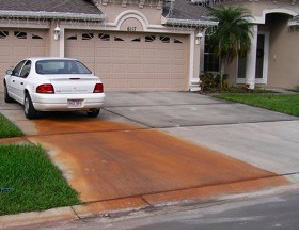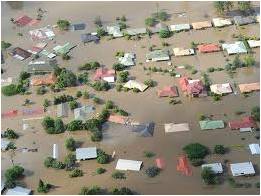How Safe Is Your Water? Diagnosing Tank Water Quality Problems
Tank Water Diseases, Bad Tastes and Smells and Your Best Water Tank Treatment Options
Bad-tasting water is one of the most common problems experienced by homeowners. Whether it be a chemical or metallic taste from mains/town water supplies or a variation in taste from your private tank water supply, bad-tasting tank water indicates you may have very unhealthy water in your tanks! Contact Pristine Today
Pristine Water System’s unique tank cleaning process, QuadClean™, cleans and sanitises your water with minimal water loss. It filters and re-oxygenates the water, leaving it clean and bacteria-free.
We can also advise you on choosing the right water filters or filtration system to solve your water issues.
What Diseases Lurk in My Tank Water?
Tank water may develop nasty smells at various times of the year. These odours can be caused by numerous local conditions, including decaying leaf matter, blossoms from various plant species, and bird and animal droppings.
These contaminants can contribute to several health problems caused by a build-up of bacteria within the water tank.
Why does my Tank Water Taste Bad?
Bad-tasting water is one of the most common problems experienced by homeowners. Whether it’s a chemical or metallic taste from mains/town water supplies or a variation in taste from your private tank water supply, bad-tasting tank water is a sign that you may have very unhealthy water in your tanks!
Potential water tank hazards include:
- Leaf matter, blossoms or flowers in gutters and on the roof
- Leaf mould, tannin (water discolouration)
- Faecal contamination from birds and small animals – frogs and cane toads
- Dust, dirt and other contaminants
- Mosquito and midgie larvae
- Sludge and organic matter build up
Why is my Tank Water Staining Walls, Paths and Driveways?
Staining of walls, paths, driveways and bathroom/kitchen sinks can be the bane of a homeowner’s existence. But the good news is that Pristine Water Systems has the solution to remedy the problem!
Water containing iron is generally found in well, bore and spear water systems.
Pristine Water Systems provides and services the latest technology for removing iron, manganese calcium hardness, etc.
This type of water causes heavy staining, clogging of copper pipework, hot water services, etc. This water also causes scum to accumulate in shower screens, corrodes dissimilar metals and is hard to lather.
Pristine Water Systems can provide a water analysis to determine the level of contaminants causing your staining problems, provide and install equipment to make your groundwater soft and usable, and provide a product to easily remove Iron stains from fences, paths, etc.
Fortunately, contacting us is simple: Pristine Water Systems can quickly and easily eliminate the above problems.
Why is my Tank Water Staining Porcelain; Toilets, Showers and Sinks
Blue-green staining in bathroom and laundry fittings can be the tell-tale sign of acidic water (low pH). Low pH can also corrode and damage metal piping and fixtures by leaching minerals from copper pipes, causing blue/green stains in sinks, bathtubs, and toilets—not to mention the potential adverse health effects of ingesting copper!
To find out more: Acidic Water Treatment.
Pristine Water Systems can complete pH and conductivity Water Testing and can also arrange for more extensive laboratory testing if required.
Could my Tank Water be Flood Contaminated?
Bore Water Holding Tanks Often Contaminated After Flooding
If your rain or bore water holding tank has been submerged in flood water, it is highly likely to be contaminated with organic matter that is unsafe for human consumption and for showering and bathing.
Do not drink, shower, wash, or bathe in flood-affected water until steps have been taken to ensure that it is safe to use.
In most cases, this will include draining, cleaning, and disinfecting the tank, the pump, ancillary pipework, etc. If a filtration system is in place, it should be disinfected and filter cartridges replaced. As a further safeguard, Pristine Water Systems recommends post-cleaning bacteria testing.
If there is no other source of safe water, please seek immediate advice before drinking or otherwise ingesting.






Water Tank Cleaning and Water Tank Maintenance for Healthy, Safe Drinking Water
At the very least, your rainwater tank will require cleaning and sanitisation in preparation for future rainwater catchments. But there are other items you will need to attend to first:
- Clean the gutters and roof of the catchment
- Clean the downpipes feeding into the water tank
- Clean insect and overflow screens
- Flush out all hoses and pipes to and from the water tank
The Pristine Water Systems professional tank cleaning process, QuadClean™ , is designed to clean out your water tank, filter the existing water supply, and sanitise the drinking water and tank.
However, immediately following a flood crisis, the quickest and best solution is to dump the contaminated water out of the water tank, sanitise the tank, and clean the catchment area. Doing so will prepare your water tank for the next rainfall.
For the flood victims, many problems need to be addressed, and sanitising the water tank may be the last thing they think about. Unfortunately, missing this critical step could make your family extremely sick by drinking or using contaminated flood water in and around your home.
We ask you to remind your friends or family who fall victim to natural disasters such as floods that they need to clean and sanitise their rainwater tank and catchment as soon as possible.
Please contact Pristine Water Systems if you have any further questions.
Click for More Information on QuadClean™
How does flood affected water affect my Water Filters and Drinking Water Purifiers?
In most cases, authorities should advise you if your mains water supply is safe or unsafe for drinking and showering, etc.
If in doubt, check with your local health department or water treatment authority immediately.
If there is a likelihood that the mains water treatment plant in your area was flood-affected, it is possible that your home filtration system or under-sink drinking water purifier filter cartridges may have been in contact with contaminated mains water for a period and may require changing. Your local council, local health authority or water treatment provider will be able to confirm if this event is likely to have occurred.
Filter systems that have been in contact with contaminated water supplies should be disinfected, and filter cartridges should be replaced before use.
NOTE: This advice is of a general nature only. For further advice, please contact your nearest health services authority.



